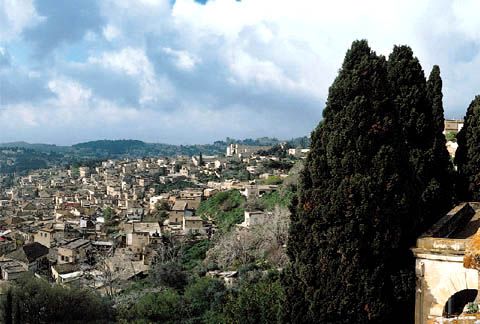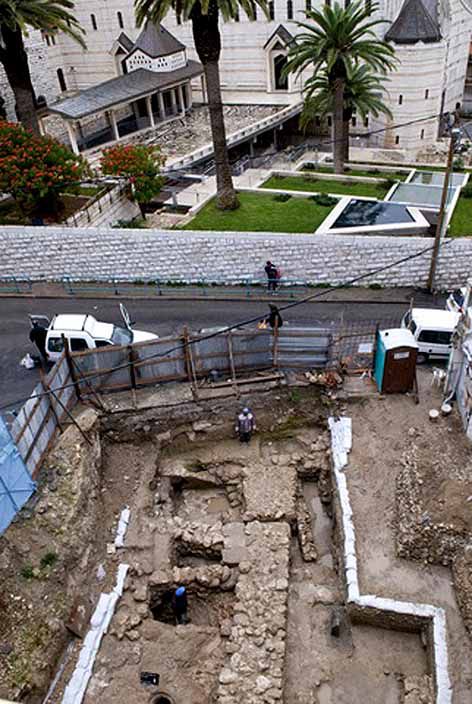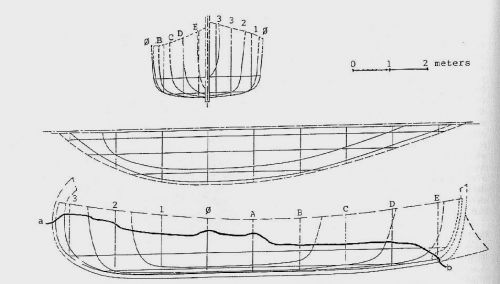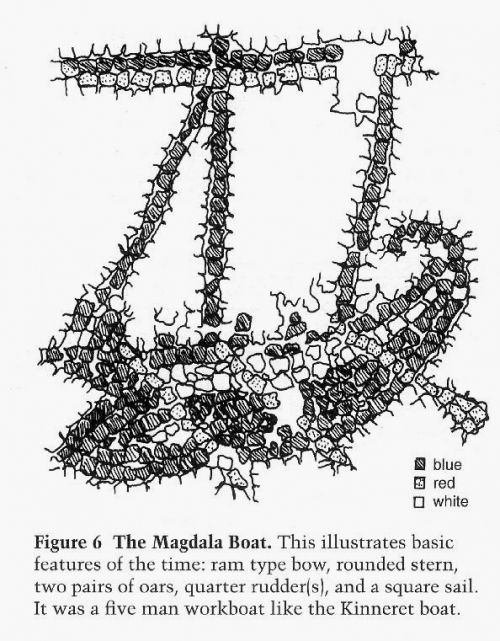MARY AND JESUS - Life in Galilee
I am fascinated by archeological research in today's Galilee for it throws great light on the daily life of Jesus, Mary Magdalene, and the disciples. They were there, they were real human people. This is a series of articles; at the end of each is a link to the next.
Nazareth - the birthplace of Jesus
A house has been found and excavated in modern Nazareth.
You can see a film of the excavations by clicking here
For years people have been saying that Nazareth didn't exist in Biblical times; but now we know it did. The Virgin Mary went to live there - at Joseph's insistence - to have her baby away from their home, reputed to be at Sepphoris, about 3 miles away to the north-west.
At the time Nazareth was a small village of perhaps 50 houses, set in a bowl-like depression in the lee of a cliff. There was a synagogue where Jesus later tried to preach, but they rejected him because he wasn't "respectable" - an incredible story! After that Jesus went to live at Capernaum and Mary Magdalene came to him to be his disciple.

Nazareth as it is today. On right; the excavations.
Nazareth only started to develope in the fourth century, after the Mother of the Emperor Constantine, Helena, visited and claimed she had found the home of Jesus. She established the Church of the Annunciation over the very site where the Angel Gabriel appeared - but the current church was re-built in 1966. There's the Church of St. Joseph, erected in 1914, over the site of a 4th century Christian Church, where Jesus and Joseph worked together, Helena claimed. (Today's historians believe Jesus spent most of his childhood in Sepphoris.)
Pilgrims then came and other churches were built, including one to commemorate local hostility to Jesus; it's the Basilica of the Young Jesus. Nearby is the Lady of Fright Chapel; on a wooded hill to mark the place where Mary watched while they threatened Jesus. They do not define whether the Mary mentioned was his mother or Mary Magdalene. This hostility is true as St. Luke tells us in the Bible. He says; "Then Jesus went to Nazareth where he had been brought up, and on the Sabbath he went as usual to the synagogue. He stood up to read the scriptures." They queried what he said and mentioned that he was the son of Joseph. . . . a reference to his illegitimacy, for illegitimate people were not respectable and so couldn't preach. Jesus told them prophets are never welcomed in their home town. The people in the synagogue were angry. "They rose up, dragged Jesus out of the town and took him to the top of the hill on which their town was built. They meant to throw him over the cliff, but he walked through the middle of the crowd and went away."
In Mark, we read about his family. "Isn't he the carpenter, the son of Mary, and the brother of James, Joseph, Judas and Simon? Aren't his sisters living here?" and Jesus points out that prophets are respected everywhere except in their home town and "by their relatives and their family."
In John's Gospel, Jesus was rejected at Jerusalem, when people insisted he tell them whether he was the Messiah or not. They were thinking of the Messiah as the person who had come to save them from the Roman occupation. Jesus spoke of his Father's authority and said "My father and I are one." The people picked up stones to throw at him, and he told them he had done many good deeds, do why did they want to stone him? For blasphemy, came the answer. But Jesus managed to evade the hands reaching out to grab him and went over to the other side of the Jordan river, to Capernaum where he was safe.
"The Jesus Boat"
The book "Jesus and his World" published in 1996, told me this; Magdala (Hebrew Migdal Nunya) was a thriving city with a prosperous fishing industry. It is located 3 miles north of Tiberias on the Sea of Galilee; the Talmud indicates it had a harbour and a boat-building industry. It has long been accepted this was the city of Mary Magdalene.
It was excavated in 1971 and 1974 on behalf of the Franciscan Custody of the Holy Land. They found Byzantine mosaic pavements, including an image of a boat, a water reservoir, a paved street, a hoard of bronze coins and a fountain-house. In 1986 an actual boat of the period was found nearby. Two walkers, walking at low water after a dry summer, saw a boat-shaped shadow in the mud. A cooking pot and a lamp enabled it to be dated between 50bc and 150ad, and there were some coins dated 30ad. It was built of several woods - sideplanks of cedar from Lebanon, the framework of oak. Archeologists called it the Kinneret boat. The boat was old and had been repaired many times, maybe it had sunk in a storm and never been recovered. Both Matthew and Mark's gospels describe a scene where Jesus and the disciples were returning one night across the Sea of Galilee when a storm blew up. Jesus was asleep but they woke him to calm the storm.


diagram of the Kinneret boat, and a mosaic in the museum of Migdal
This is amazing; a real boat proving the tale! Sudden minor squalls are famous on this inland sea. Jesus obviously knew his region and his lake. Jesus lived at Capernaum and Mary Magdalene lived at Migdal - the two places are only 5 miles apart, if that - the Sea of Galilee is only 15 miles long. We have a sudden picture of the everyday life of Jesus and his disciples . . . . it was all real, all the stories in the Bible . . Jesus really did go fishing with the disciples . . . I was moved beyond belief.
The boat was found between Migdal and Capernaum and is now in the Yigal Alon Museum in Kibbutz Ginosar, Tiberias. You can watch an interesting YouTube film all about it by clicking; www.jesusboat.com/boat.php
Now read about Mary's hometown - click here.
Inscrivez-vous au site
Soyez prévenu par email des prochaines mises à jour
Rejoignez les 261 autres membres

